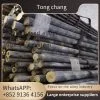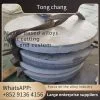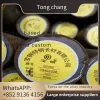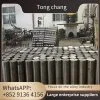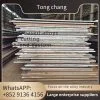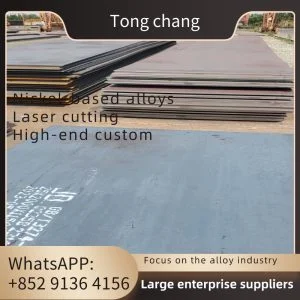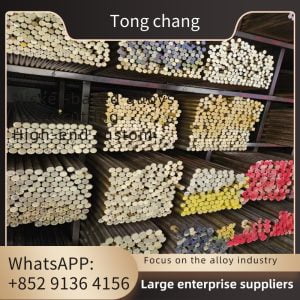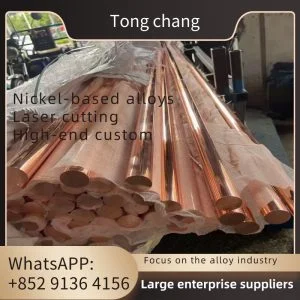| Application: | Heat Exchangers, Air Coolers, Condensers | Bare Tube Diameter: | 25-219 Mm |
|---|---|---|---|
| Base Tube Thickness: | Customized | Fin Base Tube: | Customized |
| Fin Material: | Customized | Fin Type: | Extruded, Embedded, L/LL/KL, G, H |
| Material: | Copper, Aluminum, Stainless Steel | Technique: | Extruding/ Embedding/ Type L LL KL |
| Tube Material: | Carbon Steel,Stainless Steel,Alloy Steel | Tube Wall Thickness: | 0.5mm-25mm |
CB/T 3820-2013, CB/T 3820-2013, NF EN 12452:2012, ASME 2215-2001 Fin Tube For Heat Exchanger
Finned tubes are a type of heat exchanger used in many different industries. These tubes have finned surfaces, which increases their surface area and allows them to transfer heat more efficiently. This makes them ideal for applications requiring high heat transfer rates, such as power plants and refrigeration systems.
Fin tubes are made from a variety of materials, including copper, aluminum and stainless steel. They are available in a variety of sizes and shapes and can be customized to meet the specific needs of each application.
One of the main advantages of finned tubes is their ability to operate efficiently at high temperatures and pressures. This makes them suitable for a wide range of applications, including air conditioners, heat exchangers and radiators.
In addition to their high thermal performance, finned tubes are durable and long-lasting. They are corrosion-resistant and can withstand the harsh conditions commonly found in industrial environments. This makes them a cost-effective solution for many different industries.
TONG CHUANG focuses on producing the largest variety and most complete finned tube solutions. These tubes come in two typical styles. To apply finned tubes, metal fins are spirally wound onto a tube or pipe. The second type, extruded finned tubes, are made by forming the fins into a base tube, creating integral fins on the outer and/or inner diameter.
Our wide range of finned tube options provide customers with solutions to improve efficiency and heat transfer in most heat exchangers. Check out our finned tube products to find the solution that's right for you.
| Specification | Material Grade |
| ASTM A213 ; ASME SA213; ASTM A249; ASME SA249; ASTM A269; ASME SA269; ASTM A312; ASME SA312; ASTM A376; ASME SA376; ASTM A789; ASME SA789; ASTM A790; ASME SA790 | TP304, TP304L, TP304H, TP310S, TP310H, TP316L, TP317L, TP321, TP321H, TP347, TP347H , S31803, S32205, S32750, S32760 |
| EN10216-5; EN10217-7; DIN 17456; DIN17457; DIN17458 | 1.4301,1.4305, 1.4306, 1.4307, 1.4571,1.4401, 1.4404, 1.4541, 1.4948, 1.4550, 1.4912, 1.4845, 1.4462, 1.4539, 1.4438, 1.4501 |
| ASTM A335; ASME SA335; ASTM A213; ASME SA213 | T1, T11, T12, T22, T23, T5, T9, T91, T92, P1, P11, P12, P22, P23, P5, P9, P91, P92 |
| ASTM A53; ASTM A106, ASME SA106 | GR.A, GR.B, GR.C |
| ASTM A178; ASME SA178; ASTM A179, ASME SA179; ASTM A192; ASME SA192; ASTM A209; ASME SA209; ASTM A210; ASME SA210; ASTM A 214; ASME SA214; ASTM A333; ASME SA333 | Gr.A, Gr.B, Gr.C, A179, A192, T1a, T1b Gr.A1, Gr.1, Gr.3, Gr.6 |
| ASTM B161; ASME SB161; ASTM B163; ASME SB163; ASTM B164; ASME SB164; ASTM B165; ASME SB165; ASTM B167; ASME SB167; ASTM B407; ASME SB407; ASTM B444; ASME SB444; ASTM B622; ASME SB622; ASTM B388; ASME SB388 | Grade:Hestalloy:C-276, C-4, C-22, C-2000, X, B-2, B-3, G-30, G-35. Monel:400,401, 404, R-405, K500. Inconel:600, 601, 617, 625, 690, 718, 740, X-750. Incoloy:800, 800H, 800HT, 825, 840. Pure Nickel:Ni-200, Ni-201, Ni-270. NS Alloy:Ns 1101, NS1102, NS1103,NS3105. Titanium : Gr.2 , Gr.5, Gr.7, Gr.9 ; |
1. ‘L’ Fin Tubes
- They can work at a maximum temperature of 150 degrees Celsius
- It has an acceptable level of atmospheric corrosion resistance
- It is made of aluminium and copper
- Offers a poor mechanical resistance
2. ‘LL’ Fin Tubes
- They can work at a maximum temperature of 180 degrees Celsius
- It has an acceptable level of atmospheric corrosion resistance
- It is made up of aluminium and copper
- Offers a poor mechanical resistance
3. ‘KL’ Fin Tubes
- They can work at a maximum temperature of 260 degrees Celsius
- They have an acceptable level of atmospheric corrosion resistance
- They are made up of aluminium and copper
- Offers acceptable mechanical resistance
4. ‘G’ Fin Tubes
- They can work at a maximum temperature of 400 degrees Celsius
- They have a poor level of atmospheric corrosion resistance
- They are made up of carbon, aluminium and copper
- Offers acceptable mechanical resistance
5. Extruded Fin Tubes
- They can work at a maximum temperature of 285 degrees Celsius
- They have an excellent level of atmospheric corrosion resistance
- They are purely made up of aluminium
- Offers excellent mechanical resistance





